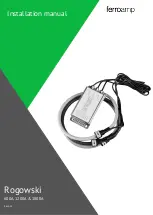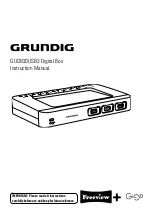System Considerations
MKW01xxRM Reference Manual, Rev. 3, 04/2016
4-10
Freescale Semiconductor, Inc.
4.4.3
MCU Clock Sources
The MCU has several options for its primary clock source depending on its mode of operation as well as
its hardware configuration
.
•
The ICS module has an on-chip 32 kHz (nominal) oscillator and FLL -
— Provides start-up run clock
— The oscillator can be used with or without the FLL
— The FLL can be used with an external clock/crystal
•
External pins are provided to accommodate an external crystal, resonator, or clock source.
•
A separate low power 1 kHz oscillator (LPO) can be used for the real time counter (RTC) or the
COP timer.
4.4.3.1
MCU External Clock Source
, the external pins associated with the MCU clock source are output XTAL and
input EXTAL. (External pin names are XTAL0 and EXTAL0.) An external clock source (such as ClkOut)
can have a frequency as high as 40 MHz with no minimum frequency. The external source must have
compatible logic levels and drive input EXTAL. Note that no external components are required for the
clock oscillator if an external source is used.
4.4.3.2
MCU External Crystal Oscillator
Referring again to
, another choice is the use of an external crystal or ceramic resonator, shown
as Y2. The MCU oscillator is a Pierce type that can accommodate crystals or resonators in any of four
modes:
•
30 to 40 kHz low frequency range crystal — low power
•
30 to 40 kHz low frequency range crystal — high gain
•
3~32 MHz high frequency range crystal — low power
•
3~32 MHz high frequency range crystal — High gain
R
F
must be a low-inductance resistor such as carbon composition. Wire-wound resistors, and some metal
film resistors, have too much inductance. Cy and Cx normally must be high-quality ceramic capacitors
specifically designed for high-frequency applications.
R
F
is used to provide a bias path to keep the EXTAL input in its linear range during crystal startup; its value
is not generally critical. Typical systems use 1 M
to 10 M
. Higher values are sensitive to humidity and
lower values reduce gain and (in extreme cases) could prevent startup. With the low-power mode, the
oscillator has the internal feedback resistor R
F
. Therefore, the feedback resistor must not be externally
Cy and Cx are typically not used when a low frequency crystal is chosen. With a high frequency range
crystal, these capacitors will be in the 5 pF to 25 pF range and are chosen to match the requirements of a
specific crystal or resonator. Take into account printed circuit board (PCB) capacitance and MCU pin
capacitance when selecting Cy and Cx. The crystal manufacturer typically specifies a load capacitance
which is the series combination of Cy and Cx (which are usually the same size). As a first-order
Summary of Contents for MKW01Z128
Page 7: ...MKW01xxRM Reference Manual Rev 3 04 2016 viii Freescale Semiconductor Inc...
Page 11: ...MKW01xxRM Reference Manual Rev 3 04 2016 xii Freescale Semiconductor Inc...
Page 133: ...MKW01Z128 MCU Reference Manual Rev 3 04 2016 2 Freescale Semiconductor Inc...
Page 233: ...Module clocks MKW01Z128 MCU Reference Manual Rev 3 04 2016 102 Freescale Semiconductor Inc...
Page 513: ...Interrupts MKW01Z128 MCU Reference Manual Rev 3 04 2016 382 Freescale Semiconductor Inc...
Page 633: ...CMP Trigger Mode MKW01Z128 MCU Reference Manual Rev 3 04 2016 502 Freescale Semiconductor Inc...

















